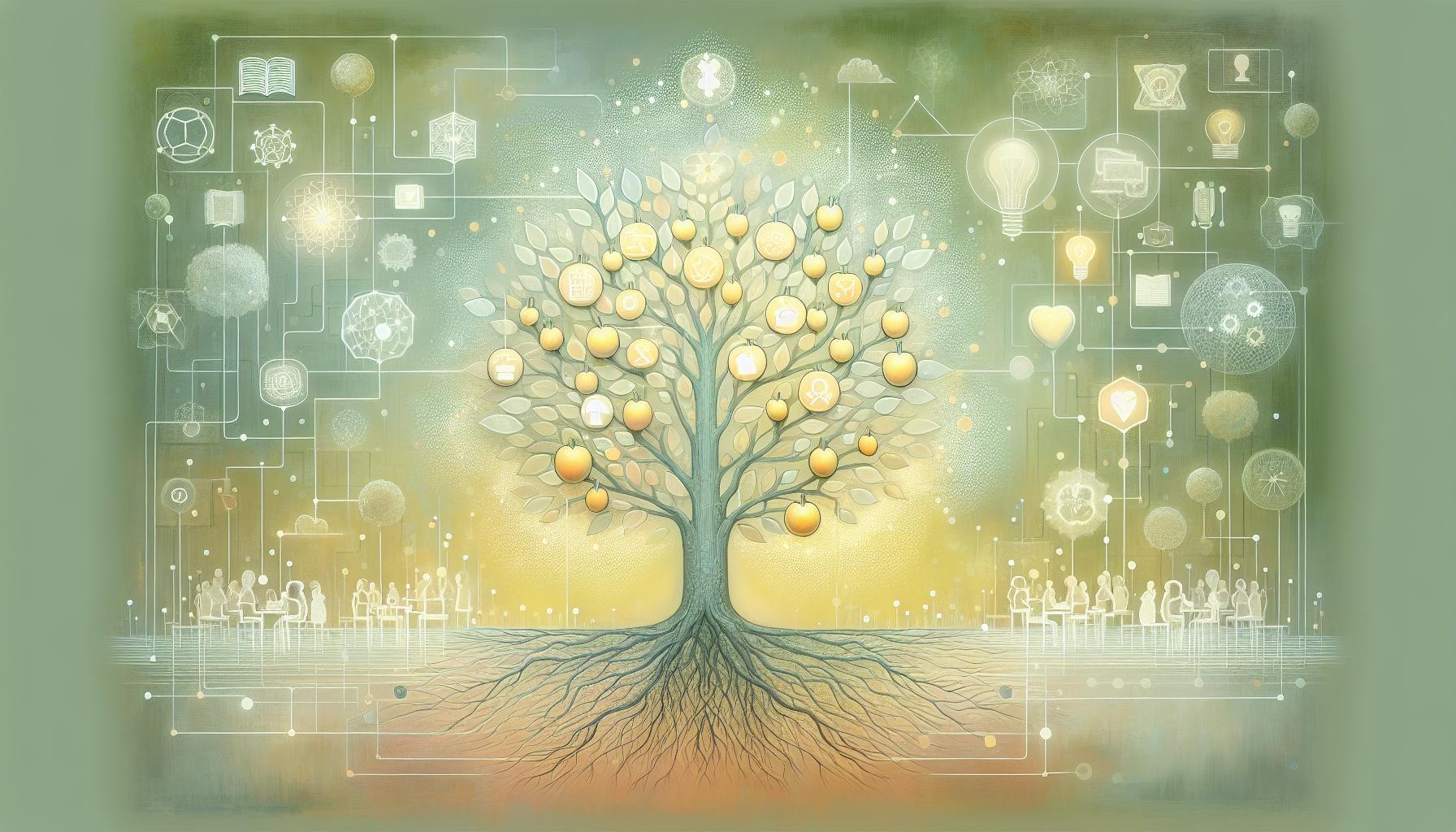Teachers likely agree that embracing diverse global perspectives in the classroom is important, yet challenging.
This article outlines practical strategies to incorporate global awareness across subjects in ways that sharpen critical thinking and better prepare students to thrive as global citizens.
You'll discover ideas like comparing cultural practices globally, evaluating media bias from different global perspectives, simulating international diplomacy through project-based learning, and more.Integrating these activities not only expands students' worldviews - it cultivates the skills they need to analyze issues critically and communicate across cultures.
Embracing a Global Classroom
Incorporating global perspectives into lessons is crucial for cultivating global awareness and developing essential 21st century skills in students. As the world becomes increasingly interconnected, students must be prepared to thrive in a diverse global community.
Introducing global learning objectives, integrating multicultural resources, and facilitating intercultural discussions can expand students' worldviews. Educators should tap into the wealth of perspectives from around the world to spark curiosity and critical thinking. Diverse global examples resonate with different backgrounds while building cross-cultural bonds.
Activities like video conferences, global reading buddies, and international partnerships provide meaningful connections. Students gain glimpses into the lives of their peers worldwide. These exchanges nurture cultural sensitivity, language skills, and global citizenship.
Equipping youth to become ethical global leaders begins in the classroom. Inclusive curriculums reflecting our shared humanity lay the foundation for a just world where all voices are heard. Together, we can embrace education's boundless potential to unite and empower students across borders.
How do you teach global perspectives in the classroom?
Teaching global perspectives in the classroom is vital for developing students into global citizens. Here are some best practices:
Use a range of active learning approaches such as group discussions, debates, simulations, and project-based activities instead of lectures. For example, have students research how climate change is impacting different parts of the world and present solutions.
Integrate real-world examples and diverse perspectives into lessons so students can understand global issues from multiple lenses. Share stories that humanize people from various backgrounds.
Foster cross-cultural connections through virtual exchange programs, connecting with sister schools abroad via video chat. This allows students to directly engage with global peers.
Assess student work based on the demonstration of global competencies like recognizing different cultural perspectives, communicating ideas effectively to diverse groups, and taking action on global issues.
The key is allowing students to construct their own global perspectives through active participation. Guide them to think critically but avoid dictating what to think. With some creativity, you can bring the world into any classroom.
How do you incorporate a global perspective?
Incorporating global perspectives into lessons can greatly benefit students by exposing them to diverse worldviews and building cross-cultural understanding. Here are some ideas:
Connect lessons to real-world issues
Relate content to current events happening globally. For example, an English lesson on persuasive writing could analyze international climate activism efforts. Students can research global initiatives and construct arguments supporting or opposing such efforts.
Highlight international contributions
When covering subject matter experts, emphasize scientists, authors, historians and pioneers from diverse national and ethnic backgrounds. This shows students that important discoveries transcend borders.
Compare global customs and traditions
Social studies units present opportunities to compare coming-of-age rituals, holiday celebrations, societal roles, etc. across different world cultures. Students find common ground despite surface differences.
Promote virtual exchanges
Set up e-pal connections or video calls for students to dialogue with international peers. Direct conversations can enhance cultural understanding and language skills.
Incorporating diverse global perspectives, whether through lesson content, activities or exchanges, builds students' world knowledge and cross-cultural competencies - essential 21st century skills.
How do you incorporate global awareness into the classroom?
Global awareness is an essential part of 21st century education that helps students become responsible global citizens. As our world becomes increasingly interconnected, understanding diverse perspectives and building cross-cultural connections prepares students for success. Here are some practical strategies to cultivate global awareness in your classroom:
Introduce Diverse Cultures and Perspectives
- Share stories, photos, music, food, and other artifacts from different world cultures to pique students' interest. Compare and contrast cultural practices to encourage analytical thinking.
- Read books featuring protagonists from diverse backgrounds. Discuss how people's life experiences shape their worldviews.
- Highlight contributions to society by underrepresented groups to counter stereotypes.
Foster Empathy and Perspective-Taking
- Facilitate discussions for students to respectfully exchange ideas on global issues. Teach civil discourse and critical thinking skills.
- Have students interview someone with an unfamiliar background and report their learnings. This builds cultural competencies.
- Use roleplaying activities for students to consider new viewpoints. Debating from another perspective builds empathy.
Incorporating global awareness not only develops students' world knowledge but also life skills like communication, empathy, and critical analysis that prepare them for an interconnected future.
sbb-itb-bb2be89
Why is it important to incorporate global perspectives into the classroom?
To develop global awareness and cultural competency in students, incorporating global perspectives in lessons is critical. As the world becomes increasingly interconnected, students need to understand different worldviews, communicate across cultures, and apply global knowledge to real-world situations [^1].
Some key benefits of global education include:
- Enhanced 21st century skills: Incorporating global examples and case studies helps students develop vital skills like critical thinking, problem-solving, empathy and cross-cultural communication. These prepare them for diverse workplaces and leadership roles on the global stage.
- Deeper understanding: Studying global issues like sustainability, human rights, or economic development from multiple international lenses provides richer context and analysis compared to a narrow, domestic-only focus.
- Higher engagement: Connecting classroom content to current global trends makes material more engaging and relevant to students. Using real-world global examples captures interest better than solely theoretical cases.
- Growth mindset: Exposure to different cultural values, worldwide challenges, and diverse opinions encourages open-mindedness, reduces biases, and nurtures growth mindsets in students.
Simple yet impactful ways for educators to integrate global perspectives include studying current events from international media sources, connecting lesson topics to UN Sustainable Development Goals, analyzing beliefs and values across cultures, or designing collaborative group projects with international partner classrooms over web conference tools. With some creativity, global themes can be incorporated across nearly all subjects and grade levels. The long-lasting benefits for students make the effort worthwhile.
Cultivating Global Awareness through Cultural Exploration
Incorporating global perspectives in the classroom is crucial for developing culturally aware and globally competent students. By exploring diverse cultures and global issues, students gain appreciation for different worldviews, values, and ways of life. Here are some strategies for cultivating global awareness through cultural exploration:
Comparing Cultural Practices and Products Globally
Have students research common practices or products like holidays, foods, clothing, architecture, music, etc. across different cultures. Ask them to create Venn diagrams, charts, or presentations comparing the similarities and differences they discover. This allows them to recognize that while people around the world have unique cultural elements, many share common bonds and experiences as well.
For example, students could:
- Compare holiday traditions like foods, decor, activities, and origins
- Analyze fashion styles, textile patterns, or traditional clothing from different regions
- Identify types of homes, buildings, or monuments across cultures
- Contrast genres of music and traditional instruments globally
Engaging in these types of comparative cultural studies fosters global awareness, cultural sensitivity, and a sense of interconnection.
Global Values and Belief Systems in the Classroom
Explore essential questions connected to global values and beliefs:
- What principles guide decision making across cultures?
- How do belief systems shape cultural practices and norms?
- What core values are universal vs. culturally specific?
Expose students to value frameworks and worldviews from diverse cultures through stories, media, guest speakers, etc. Ask them to analyze how these belief systems encourage particular mindsets or behaviors in different societies.
Classroom activities could include:
- Comparing religious stories and moral lessons from different faiths
- Examining proverbs and inspirational quotes from global thought leaders
- Evaluating current events through different cultural perspectives
Grappling with complex value systems builds cultural sensitivity. Students better understand societal issues when considering diverse worldviews rather than just their own.
Immersing students in cross-cultural exploration allows them to recognize shared human experiences while appreciating nuances that make each culture unique. Activities that compare global perspectives provide meaningful opportunities to cultivate global awareness in the classroom.
Critical Thinking in a Global Context
This section provides tips for teaching students to assess information sources, recognize biases, and construct evidence-based arguments around global issues.
Evaluating Global Media Bias and Perspectives
Students learn to detect biases, agendas, and manipulation in news reports or other media covering world events, honing their critical thinking skills.
- Use current global news stories and have students analyze multiple reports on the same topic from different global news outlets
- Ask students to identify key statements that reveal political, national, cultural, or religious biases or agendas in news articles
- Demonstrate methods for fact-checking statements, verifying sources, and assessing credibility of global news reports
- Encourage students to consider different cultural perspectives when evaluating media information about global events
Here are some online tools students can use to evaluate global media bias:
- AllSides - Compares news coverage of the same story from media outlets across the political spectrum
- Ground News - Highlights the degree of bias in news reports
Integrating these types of critical thinking activities into lessons helps prepare students to navigate the complex information landscape around global issues today.
Debating Global Issues to Sharpen Analytical Skills
Students research evidence on controversial global topics like climate change or economic policies and engage in structured debates.
- Assign small teams of 2-3 students to debate controversial real-world global issues
- Guide each team to build evidence-based arguments supporting one side of the issue
- Have students evaluate the credibility of information sources and think critically about global debates
- Use a debate format that allows equal time for arguments, rebuttals, cross-examinations, and closing statements
- Allow audience members to ask insightful questions that probe deeper into claims
- Assess students on quality of evidence, critical thinking, argument building skills - not just debate outcomes
Some interesting global debate topics include:
- Globalization - Does it help or hurt workers in developing countries?
- Foreign aid programs - Are they an effective use of resources?
- Global responses to issues like pandemics, terrorism, human rights crises
Debating global controversies strengthens students' analytical abilities, research skills, and flexibility in thinking across perspectives - essential 21st century competencies.
Integrating Project-Based Learning Activities for English
Project-based learning activities offer an excellent opportunity to incorporate global perspectives into English lessons. By engaging students in collaborative, communication-focused projects with an international angle, educators can develop key 21st century skills such as cultural awareness, empathy, and global citizenship.
Project-Based Learning: Simulating International Diplomacy
Encouraging students to take on roles as international delegates and engage in simulations of global events or forums is an impactful project-based learning activity. Teachers can organize mock United Nations sessions, Model World Health Organization conferences, youth climate summits, or any such event relevant to current global issues.
Students are assigned countries and asked to represent diplomatic delegations from those nations. They must research their country's culture, politics, issues and stances in order to embody their assigned roles. Then in simulated committee sessions, conferences or meetings, they debate, deliberate, make speeches, draft resolutions, negotiate deals etc. while interacting with peer delegates from other countries.
This develops collaboration, public speaking abilities, research skills, cultural awareness, global citizenship and 21st century diplomacy competencies among students. The multifaceted nature of such simulations ensures students build a well-rounded understanding of international relations and global cooperation mechanisms.
Teachers facilitate by establishing scenarios, protocols, committees and agendas. They can also invite guest delegates or domain experts as advisors or chairs to make the experience more immersive. Such experiential learning leaves an indelible positive impact.
Global Communication through Pen Pal Projects
Connecting students with international pen pals offers a means to build cultural exchange and global communication abilities. Teachers can collaborate with peers in other countries to match their students with pen pal buddies abroad.
Students begin by introducing themselves to their international pen pal through letters, emails, vlogs or even video calls. They exchange ideas, insights, experiences, anecdotes, local customs, traditions etc. They might even send each other culturally-relevant items like postcards, artifacts or books.
Over time, meaningful intercultural friendships and global perspectives start developing. Students gain direct exposure to diverse worldviews. Their communication skills, cultural literacy and global citizenship enhance holistically.
Teachers provide writing prompts, conversation guides and assignments to facilitate rich engagement. They can have students maintain journals cataloging key learnings from this cultural exchange. Work can also be showcased through class presentations, blogs or bulletin boards.
Such direct peer-to-peer global interaction leaves an indelible impact on young minds, fostering open-mindedness and global awareness.
Reflection: Cultivating 21st Century Global Citizens
Incorporating global perspectives into lessons is crucial for cultivating global citizenship and 21st century skills in students. As this article has explored, activities that foster cultural awareness, critical thinking, and real-world connections are key.
Here are some final takeaways:
- Exploring diverse cultures through media, books, and student-exchange builds empathy and global competency. Structured small-group discussions afterwards allow students to process new perspectives.
- Analyzing international current events using structured debate formats strengthens critical thinking abilities. Considering multiple viewpoints expands students' global awareness.
- Cross-curricular, collaborative projects tied to global issues impart 21st century skills like problem-solving, communication, and teamwork. Student-driven projects empower leadership development.
The world is increasingly interconnected. Education must evolve to prepare students to navigate this complexity with openness, discernment and care for our shared humanity. By incorporating global citizenship into curriculums, we cultivate generations of innovative, engaged citizens ready to cooperate across borders to solve tomorrow's challenges.


